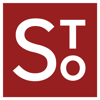
Today, technology has become a key part of modern restaurant management. It makes operations smoother, improves client experiences, and increases overall efficiency. But as your restaurant tries to find its way to success, more complexity presents itself in the day-to-day running of your restaurant. This is where restaurant scalable technology will come in handy — enabling your business to pivot easily because demand has risen.
Table of Contents
- Understanding Scalability in the Restaurant Industry
- Key Components of a Scalable Technology Stack for Restaurants
- How to Choose the Right Technology Stack for Your Restaurant
- Case Studies: Successful Technology Stack Implementations
- Common Mistakes to Avoid
- Future Trends in Restaurant Technology
- Conclusion
A tech stack is the set of tools and software businesses like restaurants use to run different aspects of their operation. Selecting the right one is vital, as this directly affects your ability to scale operations efficiently.
Understanding Scalability in the Restaurant Industry
In restaurants, scalability refers to the capability of growing your operations—be it opening more locations, accommodating increased customer capacity, or adding new services—without breaking your existing infrastructure.

Challenges Restaurants Face While Scaling
- The growth and supply chain management.
- Providing uniform customer service at various locations
- Rapidly responding to new trends in the marketplace, such as online ordering and delivery.
Technology is an essential enabler in navigating these obstacles. For example, inventory management software keeps track of supplies in real-time, helping businesses avoid stockouts or overordering, even during peak times.
Components of a Scalable Technology Stack for Restaurants
Point of Sale (POS) Systems
A powerful point-of-sale (POS) system is central to all restaurant management software. It processes payments, tracks sales, and integrates with such things as online ordering systems. Modern POS systems give analytics to help you make data-driven decision-making.
Inventory Management Software
Tracking ingredients and supplies in real time helps avoid wastage and allows for better predictions. Restaurants that employ this kind of software can cut waste by up to 15%, translating to improved profitability and sustainability.
Customer Relationship Management (CRM) Tools
CRM tools assist in identifying customer preferences, order histories, and feedback. This data allows for personalised marketing campaigns, resulting in higher retention rates.

Cloud-Based Restaurant Management Tools
Cloud solutions can provide the flexibility of access as well as remote access that greatly simplifies the handling of multiple locations. In 2023, a poll of restaurant owners showed that 45% of them said cloud-based tools were the best way to make their business grow.
Kitchen Display Systems (KDS)
By removing paper tickets from the equation, KDS increases the speed and accuracy of order preparation. Especially useful for high-volume restaurants operating across multiple delivery avenues.
Employee Management Tools
Scheduling shifts quickly, tracking hours and automating payroll are crucial for growing teams. Today’s tools also predict labor requirements based on past data, preventing a restaurant from being understaffed during peak times.
How to Choose the Right Technology Stack for Your Restaurant
A few thoughts before choosing the tools:

- Compatibility: Look for tools that will work with your existing systems, such as delivery apps and accounting software.
- Usability: User-friendly software reduces staff learning time.
- Security: Safeguarding consumer and organisation information is non-negotiable.
Case Studies: Successful Technology Stack Implementations
Starbucks: Starbucks was among the early digital converters, making the customer experience much better by adopting a mobile application that enabled mobile ordering, payment processing and loyalty award redemption. They designed dynamic digital menu boards to showcase promotions and switched up contactless payment systems for easy checkout. Data analytics helped businesses personalise their offers and optimise their stores, which resulted in higher sales and improved customer loyalty.
McDonald's: To enhance operational efficiencies, McDonald’s deployed self-service kiosks for build-your-own ordering, mobile ordering, and payment systems to expedite service. Using data analytics, McDonald’s was able to retrench its menu and increase sales, blending nostalgia and modernity.
Common Mistakes to Avoid
- They Overcomplicate the Stack: The great number of tools causes inefficiency. Look for integrated solutions to cast a broader net.
- Neglecting Scalability: Only make an investment in tech that can grow as you do, rather than simply fulfilling immediate needs.
- Not Enough Training: Good training for employees ensures the treatment of new systems.
Future Trends in Restaurant Technology
- AI and Machine Learning: Predictive analytics for inventory and customer behavior.
- Omnichannel Ordering: Single platforms for in-store, online and mobile orders.
- Mobile Payments: A Convenience & Contactless Payments
According to a report,70% of restaurants will use AI-powered solutions by 2025 to smoothen business processes and improve customer experiences.
Conclusion
To make sure your restaurant business will be around in the future, you need to pick the right flexible technology. From software for managing goods to cloud-based tools for running a restaurant, a stack that works well together makes things easier, makes customers happier, and helps the business grow.
Are you ready to build a technology stack that can grow? Get professional help from us, or look at the restaurant management tools so book free live demo we suggest to start changing your business right away.


